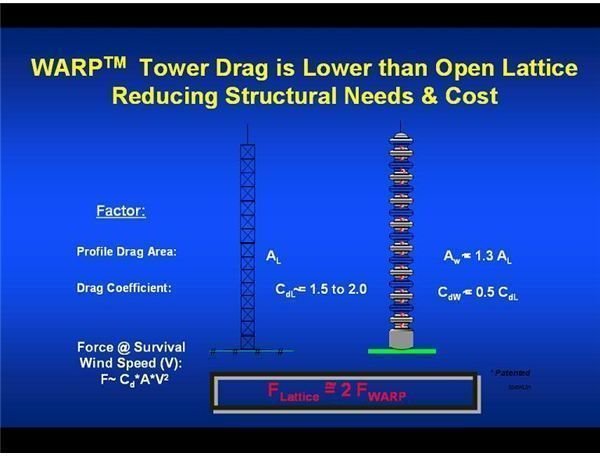WARP vs Turbine: Comparison of Wind Power Plants – Part IV
Introduction
This is the fourth article in this series of the relative comparison between WARP units and Wind Power Plants. In the first article we learnt that WARP units occupy far lesser space as compared to conventional wind turbines, while in the second article we learnt about the advantage of height that WARP has to offer. The third article dealt with decibel levels of WARP and conventional turbines. In this article we will learn about the tower drag and effectiveness against lightening strikes in both these types of wind machines.
The Wind Drag
You surely have experienced the power wind at one time or the other. Just try standing still when wind is blowing at full force and you will know the force which it exerts on you. Imagine the amount of force which wind would be exerting on the overall structure of the wind generator which is held quite high in the air. Of course due to the nature of operation of the turbine, it should be exposed to maximum possible wind force but at the same time this also increases the drag on the tower. Though these conditions seem mutually opposite, yet a wind turbine has to live and survive under these conditions.
You know that a typical WARP unit is made up of several modular units stacked one on top of the other. A conventional turbine uses different types of tower design, the most prominent one being the lattice structure.
I will not go into the detailed mathematical analysis of the forces acting on both these types of units, as that would be much beyond the scope of the article. But you can take a look at the graph in figure 1 below which shows the main formulae used in calculating the wind drag in both situations and the force acting as a result of the wind. You will notice that there are three variables on which the force depends and these are
- Drag area
- Drag coefficient
- Wind velocity
For a given region, the wind velocity is same so the remaining two factors decide which force is greater. As you can also see in the picture that the drag area for WARP is more, but the drag coefficient is significantly lower for WARP unit as compared to a conventional turbine standing on an open lattice structure tower. Hence the overall result is that the force acting on the tower is nearly double for a lattice structure vis-à-vis a WARP unit which is an obvious advantage.
Effectiveness against Lightning Strike
It is also claimed by Eneco Corporation that the WARP unit is much more effective in safeguarding itself against lightning strikes as compared to conventional wind turbines, though they do not give details of tests carried out regarding this. So even if this factor is ignored, I think the other reasons discussed till now are quite solid and effectively proven in order to arrive at the conclusion that a WARP unit is much more effective than a conventional wind power turbine.
Figure 1: WARP vs Wind Turbines
References
Figure 1: WARP vs Wind Turbines (Courtesy: Eneco Corporation, Texas)
Suggested Readings
WARP vs Turbine: Comparison of Wind Power Plants – Part I
WARP vs Turbine: Comparison of Wind Power Plants – Part II
